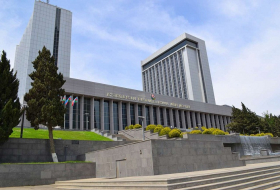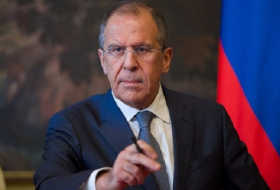I watched the film Oppenheimer in Astana, the capital city of Kazakhstan where I was going to cover a regional conference to commemorate the International Day against Nuclear Testing. The movie is still not released in Japan due to its sensitive nature.
For countries like Japan and Kazakhstan where there are still severe health after-effects of nuclear bombings and testings, the film is disturbing because it only hints at the mass deaths and radioactive sickness that the bombs unleashed.
Christopher Nolan does a remarkable job in laying bare the politics behind the making and detonation of the first atomic bomb, and the moral dilemma faced by physicist J Robert Oppenheimer. I only wish he had done more to describe the human dimension of the effects of nuclear weapons ever since the Trinity Test in 1945, the destruction of Hiroshima and Nagasaki, and the danger of an unthinkable global nuclear conflagration that persists to this day.
The movie does not even address the health impacts and suffering from radioactive fallout on 15,000 Americans living downwind from Los Alamos in the Nevada desert after the tests. The US government’s official explanation remains that the test site was in the middle of nowhere, a narrative the movie chooses not to delve into.
Remarkably, the Soviet Union employed a similar justification, dubbing the Semipalatinsk test site in the Kazakh steppe as being 'in the middle of nowhere' to rationalise its 456 nuclear tests, many of which were conducted atmospherically, despite the presence of nearby towns.
Intriguingly, the Soviet Union's thermonuclear test, Tsar Bomba, conducted in the Arctic in 1961, led its chief scientist, Andrei Sakharov, down a path of dissent and persecution by the state, mirroring Oppenheimer's own trajectory.
Today, the tragic aftermath of nuclear testing persists in northeastern Kazakhstan, near the vast Semipalatinsk Nuclear Test Site, a testing area equivalent in size to Belgium. Children continue to be born with health issues, including cancer and deformities, offering harrowing proof of the inhuman consequences of nuclear weapons. Over 1.5 million Kazakhs endured fallout exposure from 1949 to 1989.
On 29 August, 1991 the Semipalatinsk Nuclear Test Site was permanently closed by Kazakhstan, even though it was still a part of the Soviet Union. Kazakhstan subsequently became independent and the first country in the world to voluntarily turn itself to a non-nuclear weapons state from a nuclear weapons state by abolishing its nuclear arsenal, the fourth largest in the world at the time.
In 2009, at the initiative of Kazakhstan, the UN General Assembly adopted a resolution, designating August 29 as the International Day Against Nuclear Tests, emphasising the significance of this historic closure.
The nuclear tests have had a serious impact on the lives of the Kazakhs to this day. The famous painter Kalipbek Kuyukov was born without hands after being exposed to radiation in his mother’s womb. Kuyukov is involved in the Nevada-Semipalatinsk Movement, which played a vital role in closing down the site and conveys the horrors of nuclear tests through his paintings.
Dmitriy Vesselov, a third-generation survivor of Semipalatinsk's nuclear tests, carries the scars of his family's exposure. He suffers from a physical deformity in which his hands are connected by only a few ligaments due to the absence of collarbones. His poignant words serve as a stark warning against those who advocates for the use of small tactical nuclear weapons and limited nuclear war, echoing the collective hope of nuclear victims worldwide.
The cumulative power of nuclear detonations at Semipalatinsk dwarfed the atomic bomb dropped on Hiroshima by a staggering 2,500 times. Against the backdrop of the Ukraine conflict and Sino-U.S. tensions, the ominous tick of the Doomsday Clock edges closer to midnight. It is imperative that humanity remembers the grave consequences of military nuclear use and testing.
It is worth reminding ourselves that the threats posed by an all-out global nuclear confrontation will be much more serious for life on the planet than the projected impacts of the climate crisis.
The regional conference in Astana, organised by Kazakhstan’s Ministry of Foreign Affairs in collaboration with international partners, participants delved into the humanitarian aftermath of nuclear weapons. This dimension, conspicuously missing in Oppenheimer, took center stage, alongside disarmament discussions among nuclear-armed nations at the Preparatory Committee for the 2026 Review Conference of the Treaty on the Non-Proliferation of Nuclear Weapons (NPT) held in Vienna.
Hirotsugu Terasaki, Director General of Peace and Global Issues at Soka Gakkai International (SGI), a co-host of the regional conference, emphasised the ongoing discussions within the international community surrounding Articles 6 and 7 of the Treaty on the Prohibition of Nuclear Weapons (TPNW). These articles call for state parties to provide aid to nuclear victims, remediate affected areas, and promote international cooperation. Kazakhstan has been appointed, alongside Kiribati, as a co-chair of the working group at the heart of these crucial discussions.
While the nine nuclear-armed nations continue to disregard the TPNW and attempt to convince the public of the necessity of nuclear deterrence, it is imperative to recognise that that no matter who may use a nuclear weapon next time, it will be ordinary people like us who will be at the receiving end of this inhumane weapons with inter-generational after-effects.
We have to pay attention to the human dimension of the effects of nuclear weapons on the 'Global Hibakusha', or victims of nuclear use, testing and productions including the USA, Russia, Kazakhstan, Australia, Algeria, South Pacific Islands, China, North Korea, and the Democratic Republic of Congo.
As the second Meeting of States Parties of the TPNW approaches, set to convene at the United Nations Headquarters in New York between November 27 and December 1, the world faces the looming threat of nuclear weapons use. State parties, joined by NGOs and representatives of global Hibakusha, are poised to advocate for a world free from nuclear weapons by endorsing and ratifying the TPNW.
Katsuhiro Asagiri is a Japanese journalist with International Press Syndicate (INPS) Japan and project director of 'Towards a World without Nuclear Weapons' and 'SDGs for All'.
More about:
















































